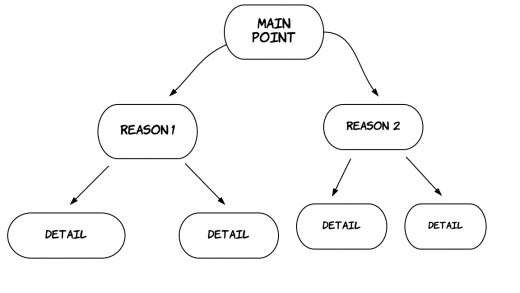The Best/Easiest way to Write any Article

Step 1: Brainstorming Quickly
In order to come up with a topic, brainstorming is necessary. Yes, it is the worst part of the writing process, but I have improved its efficacy. First, write down your likes, beliefs, hobbies, and your favorite things. Then jot down subtopics of all those favorite things. After this is done, go down your list and use these phrases with the words you wrote down:
"How to ______"
"Why _____ is right"
"Misconceptions about _______"
"Why ______ is good for you"
"The truth about ______"
"Ten things you did not know about _______"
Use the 5 best combinations that work and then quickly rate them. Afterwards, choose the best rated combination and make it sound nicer.
Here is an example of the process: I like writing, playing guitar, and watching scary movies. Now, I write subtopics for each category:
Writing
1. Mystery
2. Academic
Playing guitar
1. Busking
2. Composing
Watching scary movies
1. Horror cliches
2. Best horror movies
Time to plug-in the topics to the phrases:
"How to write academically"
"Misconceptions about composing music"
"The truth about horror cliches"
And, voila! I know have three great ideas. Still, I could change the forms of the titles in order to make them more interesting. Your topics should challenge someone's views, be shocking, have new information, make your readers' think, or be downright entertaining. Try to accomplish at least one of these goals before moving onto the next step.

Step 2: A Simple Outline
Next, you must craft a simple outline no matter what. Your article will have terrible organization and look sloppy if you do not outline. This is the key step to any worthwhile writing process. If you are doing a "how to" article, the outline is really simple. All you have to do is go through the steps in order.
However, if you are arguing some point then it becomes harder. When arguing your point, follow the model displayed in the picture above. The main point is your topic, which you should already have. After that, develop the reasons that explain why your point is right. Each reason will be developed into its own paragraph; so, make sure you have enough reasons in order to be able to write the amount you want. Then, develop the details for the reasons (this includes examples, quotes, anecdotes, or straight up logic). Make sure to be as specific as possible when writing your details and also make sure that there is a logical flow between your details. After you are done, organize the reasons in the most reasonable sounding way. Now, you have your very own outline and the rest is a piece of cake.

Step 3: Writing it all out
All you have to do is follow your organized outline and then you have an article. If you want an introduction, write the main topic for your first sentence and then write down all of your reasons in the order you put them in your outline. That's really all there is to an introduction. Next, write your body paragraphs. To do so, write your reason as the first sentence for every body paragraph and then go into the details you laid out in the outline. Remember, your details must prove your reason in some way.
Lastly, you have your conclusion. It can be done a couple of ways. You could use a "call to arms" technique; this is when you encourage the reader to act on what your article has said. Also, you could emphasize the importance of your paper or ask questions to the reader. If these techniques do not work for your article, you could go the easy way and just write down your main point and how you proved it with your reasons.
So, now you have a quick and easy way to write good papers. After using this writing process a few times, it will become second nature to you and your writing will come out effortlessly. Good luck fellow writers!








